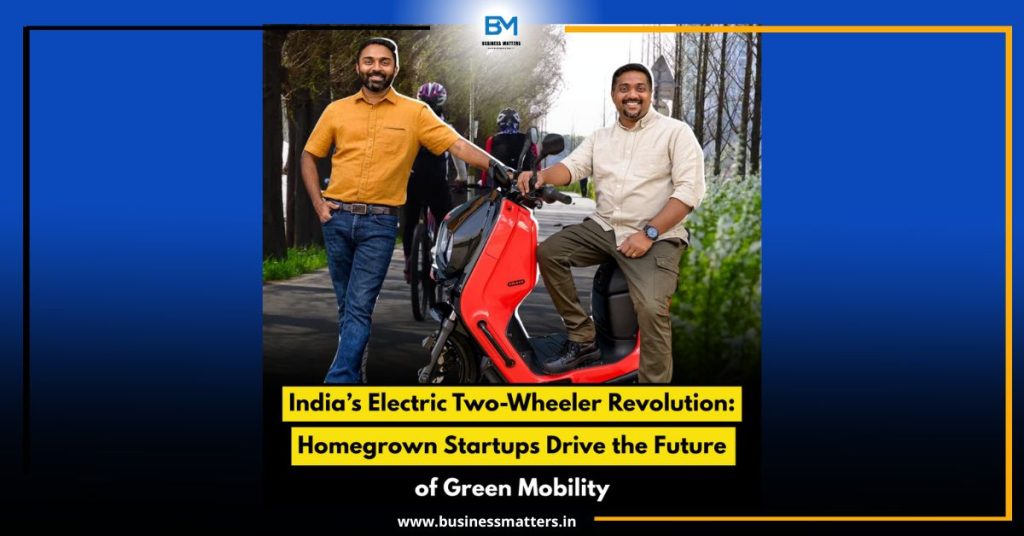India is on the cusp of a major transformation in its mobility landscape, with electric two-wheelers (e2Ws) emerging as the frontrunners in the race toward sustainable transportation. A recent McKinsey report predicts that electric two-wheelers will constitute 60-70% of new vehicle sales in India by 2030, highlighting the pivotal role this segment is set to play in the country’s transition to green mobility.
The Rise of Electric Two-Wheelers in India
India has long been a two-wheeler-dominated market, owing to the affordability, ease of use, and convenience these vehicles offer in urban and semi-urban areas. With rising fuel costs and increasing environmental concerns, the shift to electric mobility has become not just a trend but a necessity.
However, the global EV giants remain largely inaccessible to the average Indian consumer, primarily due to high pricing and import-related challenges. This has opened the door for homegrown startups to step in and fill the gap with affordable, efficient, and technologically sound electric two-wheelers tailored for the Indian market.
Read Also :- PaySprint Raises $3 Million in Series A to Expand AI-Driven Fintech Infrastructure
Homegrown Startups Leading the Charge
Startups such as Ola Electric, Ather Energy, TVS iQube, and Hero Electric are spearheading India’s EV revolution by offering locally manufactured electric scooters and bikes that are not only cost-effective but also cater to the diverse needs of Indian riders. These companies are investing heavily in R&D, infrastructure, and battery technology to bring smart, sustainable mobility solutions to the masses.
Affordability and innovation are the key differentiators. From AI-powered dashboards and IoT-enabled connectivity to swappable batteries and lightweight design, these brands are introducing game-changing features that make e2Ws an attractive alternative to petrol-powered counterparts.
Regulatory Challenges and Government Incentives
The journey, however, hasn’t been without roadblocks. Despite strong demand, technological setbacks and compliance-related conflicts have slowed down progress. The FAME India scheme (Faster Adoption and Manufacturing of Hybrid and Electric Vehicles) and various state-level subsidies were designed to encourage EV adoption, but frequent policy changes, unclear guidelines, and scrutiny over eligibility for subsidies have posed significant challenges for manufacturers and consumers alike.
Still, these policies have played a crucial role in making e2Ws more accessible. Incentives such as reduced GST, subsidies on battery costs, and registration fee waivers have helped bring down prices and drive adoption, especially in Tier 2 and Tier 3 cities.
The Road Ahead
India’s electric two-wheeler market is well on its way to becoming the backbone of the country’s green mobility mission. With supportive policies, increasing consumer awareness, and a growing charging infrastructure, the sector is poised for exponential growth in the next five years.
To truly realize the vision of affordable and accessible electric mobility, continued collaboration between startups, government bodies, and private investors is essential. The focus must remain on scalability, reliability, and innovation to build a future where sustainable transportation is the norm, not the exception.
Tags: Electric Two-Wheelers India, EV Market India, Green Mobility, Ola Electric, Ather Energy, FAME India, Electric Scooters, Indian EV Startups, Sustainable Transportation, McKinsey EV Report, Electric Vehicle Policy India, Clean Mobility Revolution


